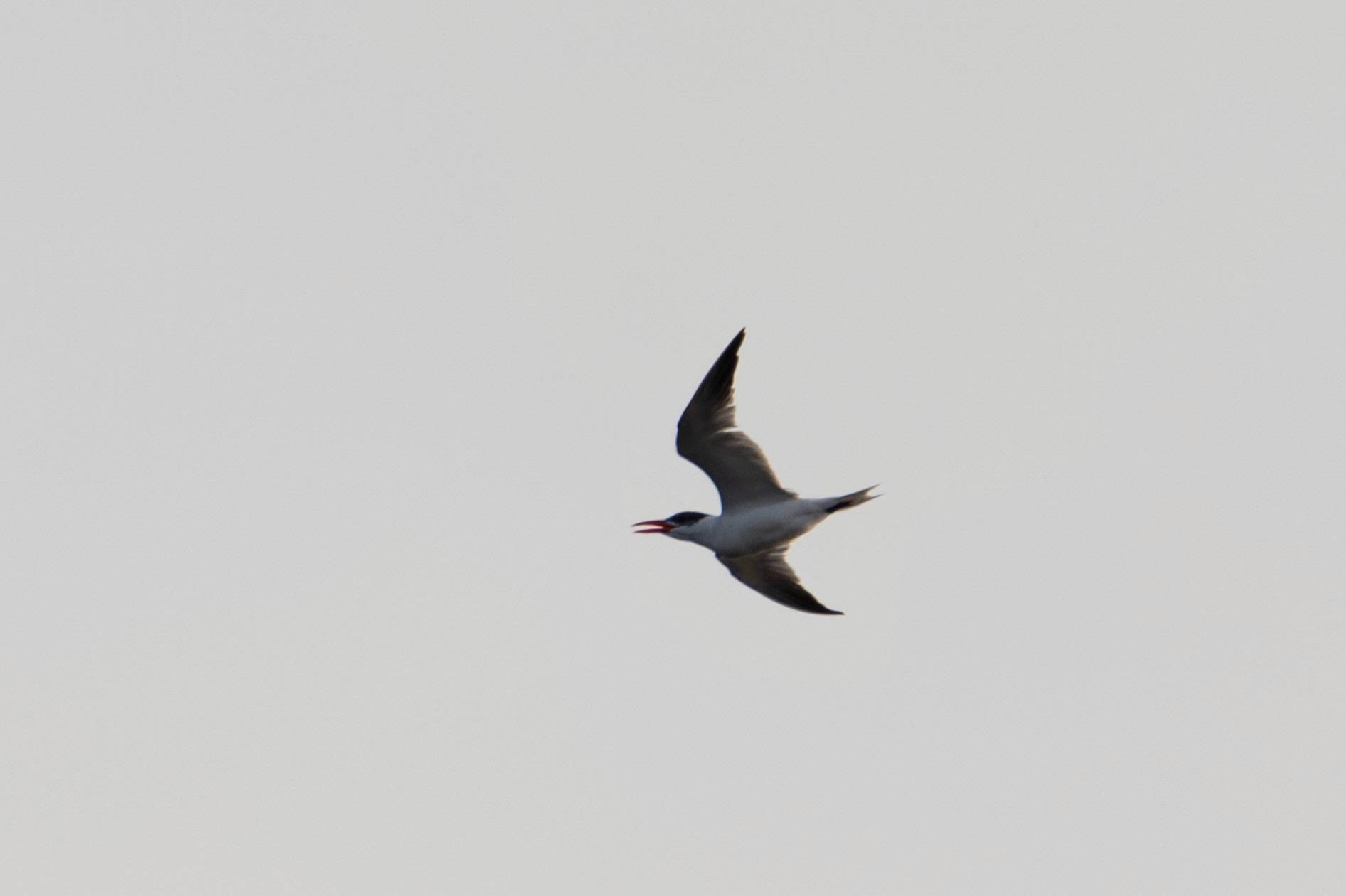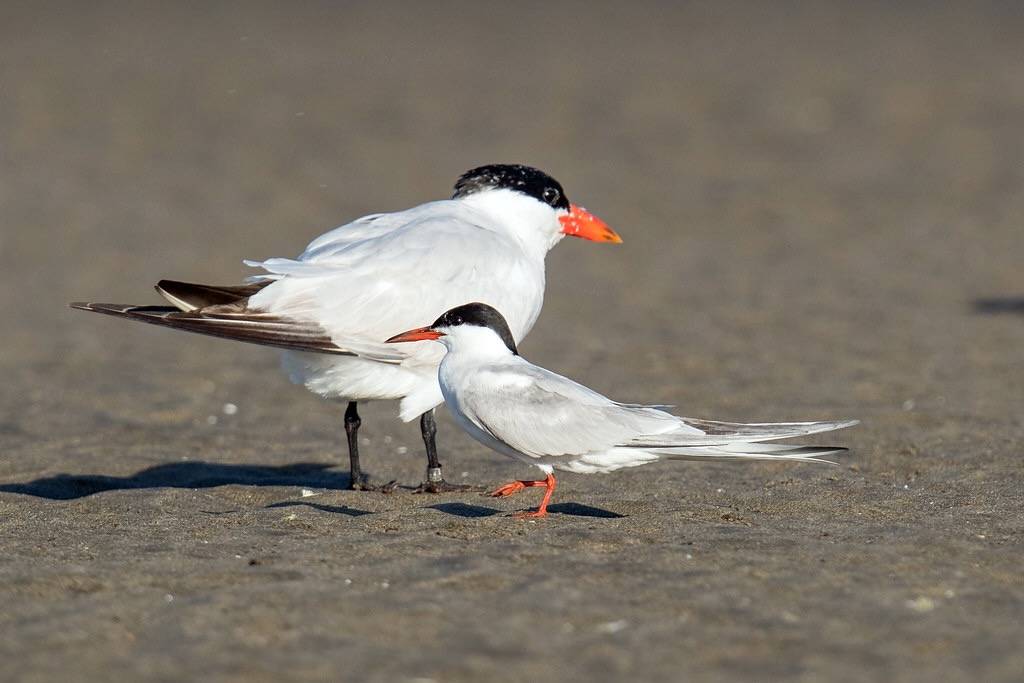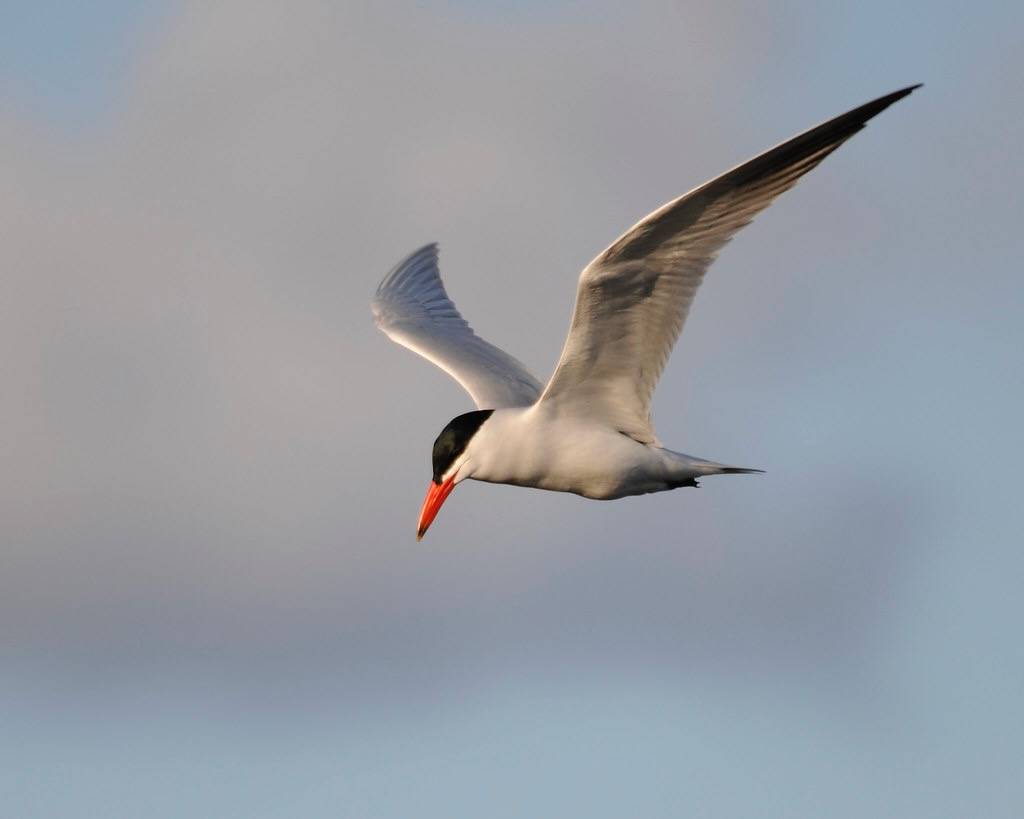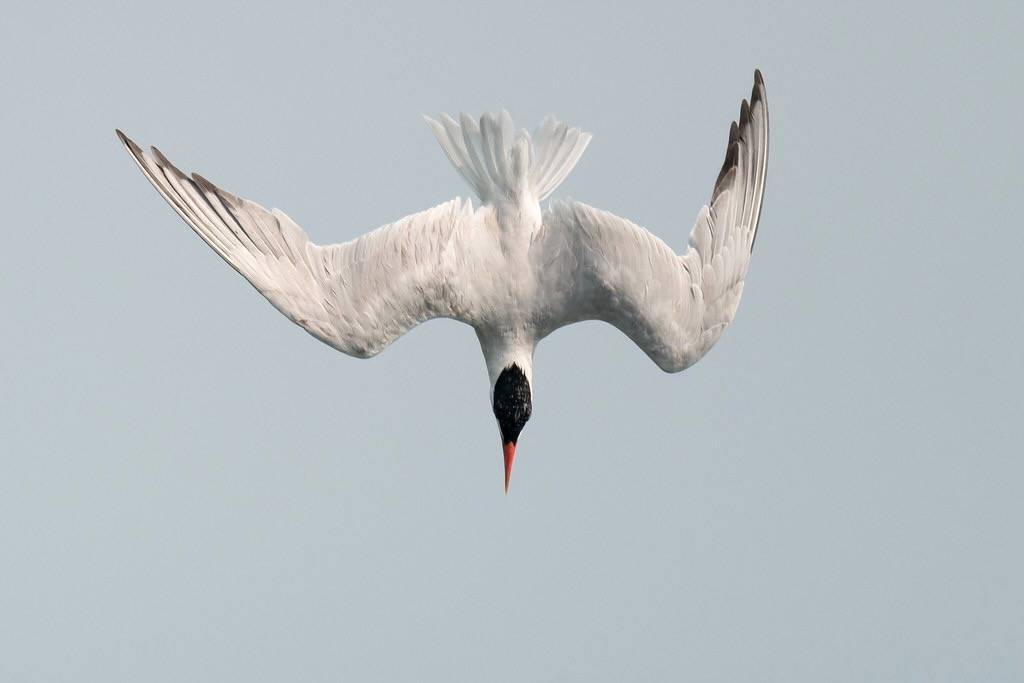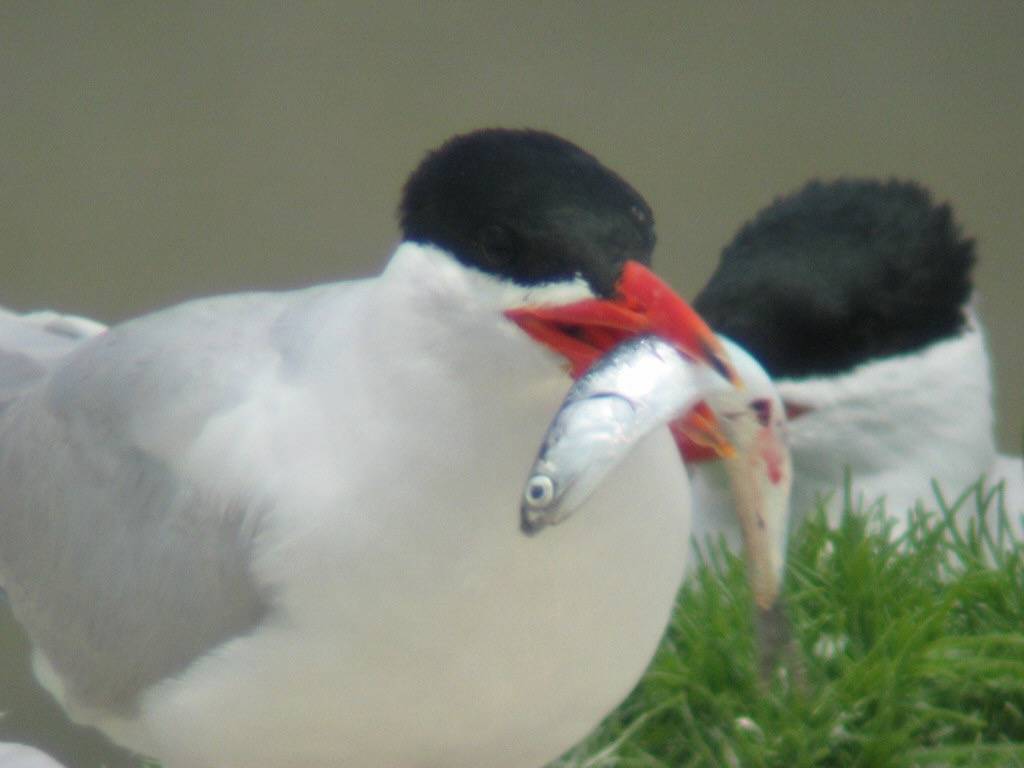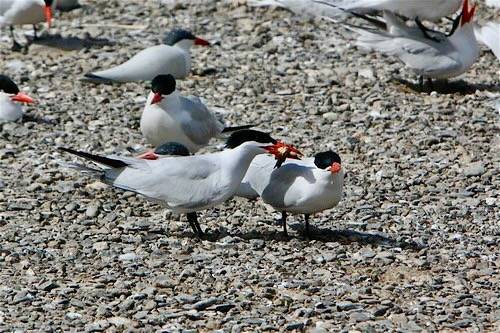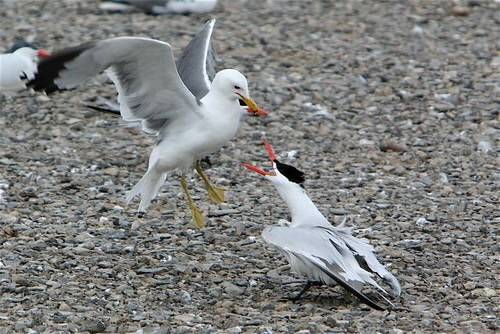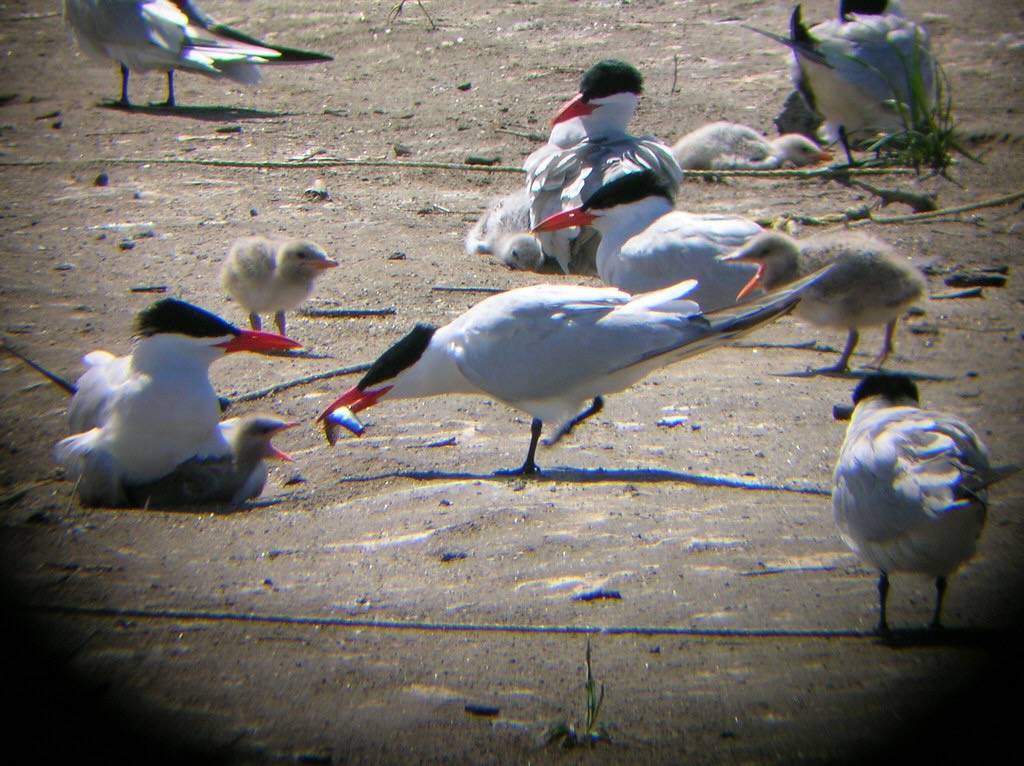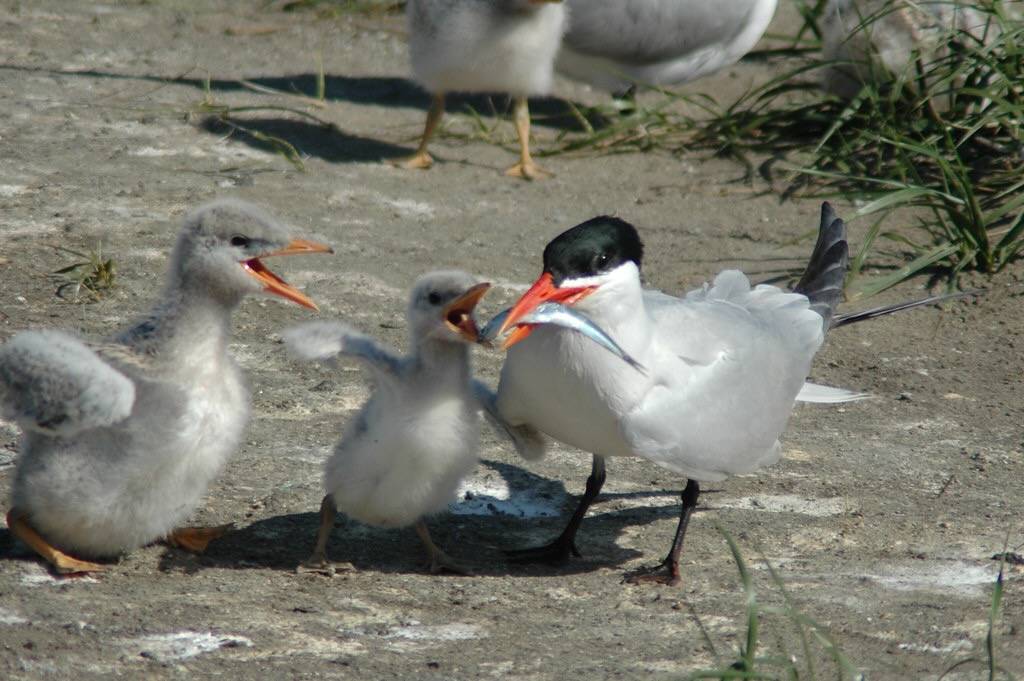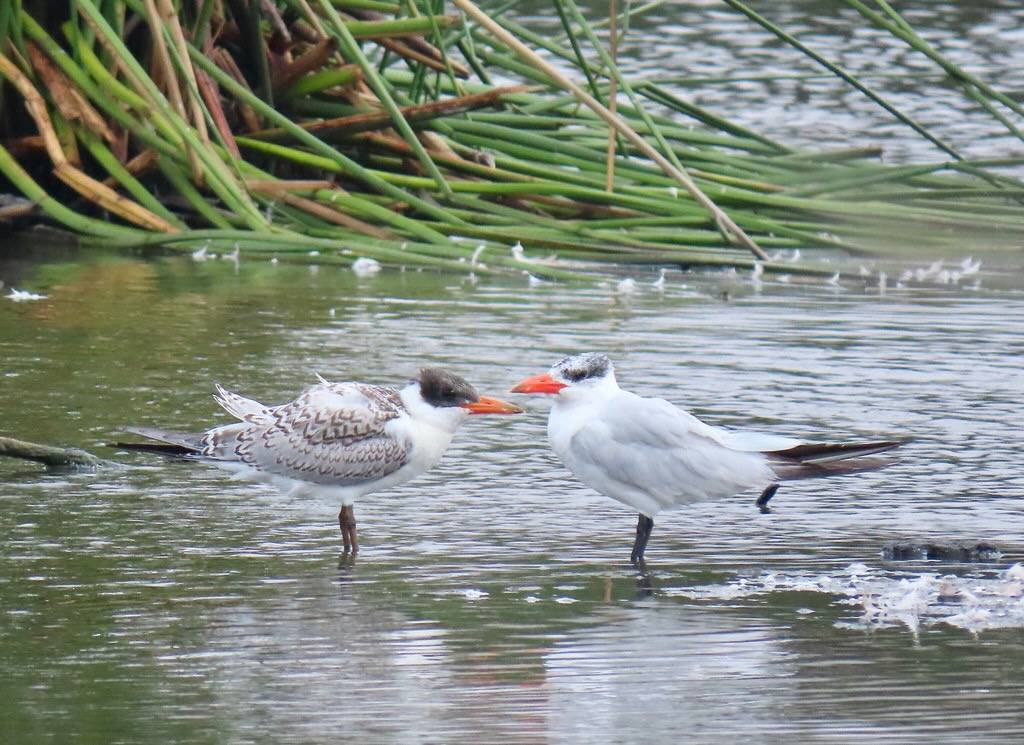Caspian Tern
The Caspian Tern was recorded for the first time at Salter Grove in September of 2023. At least three and possibly four migrating individuals were seen flying over the northern arm of the breakwater. It is the largest tern in North America and can be mistaken for a gull because of its sizable and chunky body. However, the bright red dagger-like bill is definitely tern-like.
Small disjunct colonies of the Caspian Tern are found on all continents except South America and Antarctica. Preferred nesting sites include coastal and freshwater islands, wetlands, or beaches inaccessible to predators.
Although still fairly common on the shores of its namesake, the Caspian Sea, European populations seem to be declining overall. In contrast, colonies in North America are growing steadily in areas free from human disturbance. The Caspian tern mainly eats small fish and has benefited from the overfishing of large predacious fish that would otherwise be competitors in the Great Lakes region.
The world's largest breeding colony of Caspian Terns is on an artificial island on the Columbia River between Oregon and Washington. The voracious appetite of the over 6,000 breeding pairs has negatively impacted the salmon fishery in the area. In an effort to balance tern and salmon conservation, artificial islands with suitable nesting habitat have been created to relocate nesting birds and thus reduce their predatory impact.
For more information:
https://www.allaboutbirds.org/guide/Caspian_Tern
https://www.audubon.org/field-guide/bird/caspian-tern
https://animaldiversity.org/accounts/Sterna_caspia/
https://guides.nynhp.org/caspian-tern/#:~:text=The
https://www.gov.nl.ca/ffa/files/wildlife-endangeredspecies-ssac-caspian-tern-ssac.pdf
https://www.lakechamplaincommittee.org/learn/lake-look/tern-tern-tern
https://today.oregonstate.edu/archives/2008/jun/efforts-osu-corps-engineers-relocate-terns-beginning-see-success

